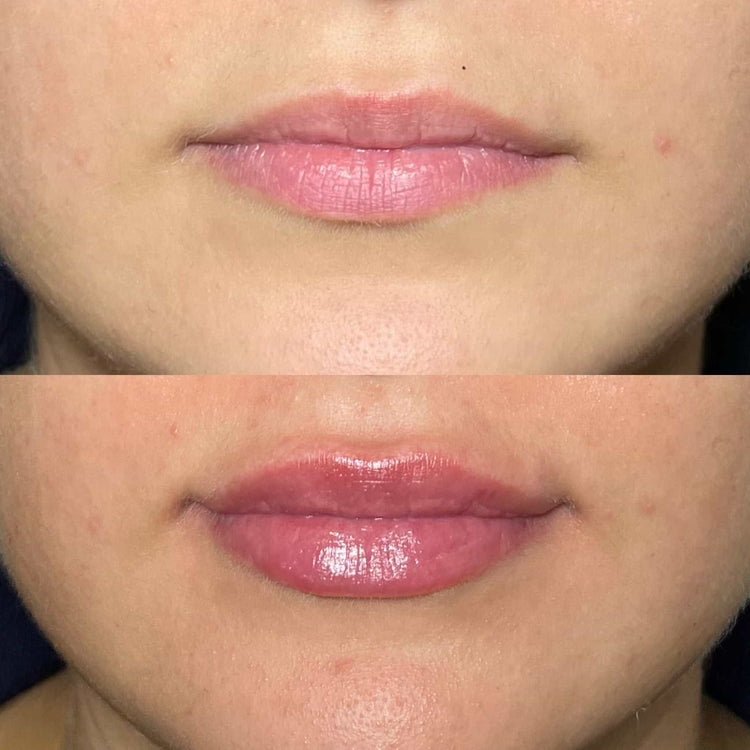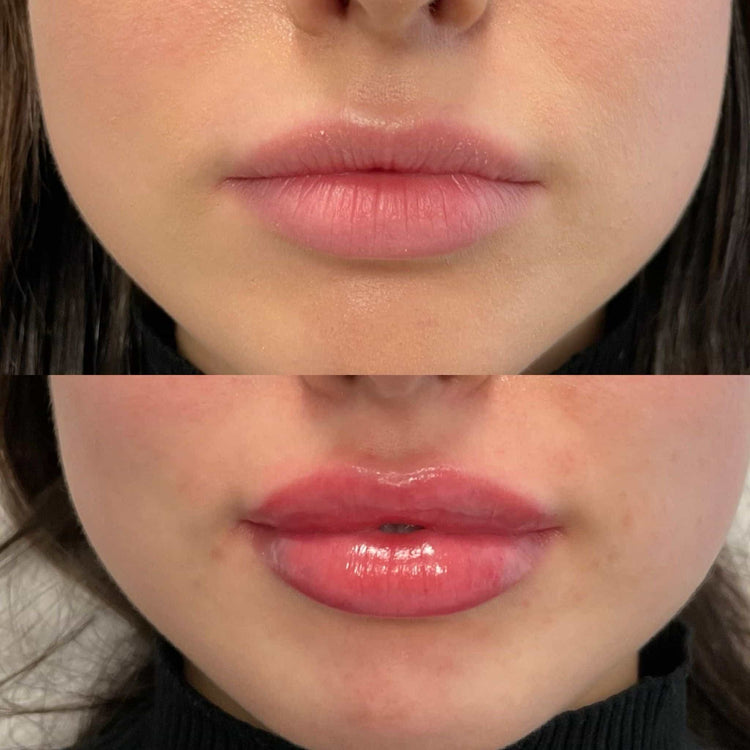Dermal Fillers vs. Botox
In the realm of cosmetic treatments, two popular options stand out: dermal fillers and Botox. While both aim to enhance facial aesthetics, they target different concerns. Dermal fillers utilize hyaluronic acid to add volume and fullness to areas like cheeks, lips, and under-eye hollows, smoothing wrinkles and restoring lost contours. Conversely, Botox works by temporarily paralyzing muscles, reducing the appearance of dynamic wrinkles that form with facial expressions.
Mechanism of Action
Dermal fillers achieve their effects through the introduction of hyaluronic acid (HA), a naturally occurring substance in the body that helps retain moisture. HA attracts and binds water molecules, increasing the volume and plumpness of treated areas. This plumps up the skin, smoothing out wrinkles and restoring lost contours.

Botox, on the other hand, employs botulinum toxin type A, a neurotoxin that temporarily blocks nerve signals to muscles. When injected into targeted facial muscles, Botox prevents them from contracting, thereby minimizing the formation of dynamic wrinkles—those lines that appear with expressions like smiling or frowning.
Areas of Treatment
Dermal fillers and Botox are both effective cosmetic treatments, but they work in distinct ways to address different concerns. Fillers, as mentioned previously, plump up areas lacking volume, smoothing wrinkles and restoring youthful contours. Areas commonly treated with fillers include the cheeks, lips, under-eye hollows, nasolabial folds (lines from the nose to the corners of the mouth), marionette lines (vertical lines below the mouth), and even hands.
Botox, however, focuses on reducing the appearance of dynamic wrinkles. These are the fine lines that form when you smile, frown, or squint. Botox is injected into muscles prone to creating these wrinkles, such as the forehead, crow’s feet (the lines at the corners of the eyes), and frown lines between the eyebrows.
Duration of Results
The duration of results for dermal fillers and Botox varies depending on individual factors and the treated area. Dermal fillers typically last between 6 to 18 months.
Botox effects usually last for 3 to 6 months.
However, repeat treatments are generally required to maintain the desired results.

Recovery Time
When it comes to recovery time, dermal fillers and Botox offer different experiences.
- Dermal fillers usually have minimal downtime, with most patients resuming their normal activities immediately after treatment. There may be some mild swelling or bruising at the injection site, which typically subsides within a few days.
- Botox also boasts a short recovery period. Side effects are generally mild and temporary, including redness, bruising, or a slight headache at the injection site. Most individuals can return to their regular routine within 24 hours of treatment.
Dermal Fillers vs. Chemical Peels
Beyond dermal fillers and Botox, the world of cosmetic treatments in the UK offers a diverse array of options for enhancing appearance. Chemical peels, for instance, work by removing the outermost layer of skin, revealing smoother, brighter skin beneath. This process can help minimize fine lines, wrinkles, acne scarring, and hyperpigmentation.
Skin Concerns Addressed
Chemical peels utilize a chemical solution to exfoliate the top layers of the skin.
There are different types of chemical peels, ranging from superficial peels that target surface-level concerns like dryness and uneven tone to deeper peels that address more severe issues such as acne scarring and wrinkles. Superficial peels often contain alpha hydroxy acids (AHAs) or beta hydroxy acids (BHAs), which gently remove dead skin cells and stimulate collagen production.
Deeper peels may involve stronger chemicals like trichloroacetic acid (TCA) or phenol, requiring longer recovery times and addressing deeper skin concerns. Chemical peels can effectively address a range of skin issues, including fine lines, wrinkles, acne scars, hyperpigmentation (dark spots), uneven skin tone, and sun damage.
Level of Skin Renewal
Dermal fillers and chemical peels both aim to improve skin appearance but through distinct mechanisms. Dermal fillers add volume to the skin, smoothing wrinkles and restoring contours by injecting hyaluronic acid, a naturally occurring substance that attracts moisture. Chemical peels, on the other hand, work by exfoliating the outermost layer of skin to reveal smoother, brighter skin underneath.
Chemical peels offer varying levels of skin renewal depending on the type used. Superficial peels address surface-level concerns like dryness and uneven tone, while deeper peels tackle more significant issues such as acne scars and wrinkles. Deeper peels involve stronger chemicals and necessitate longer recovery times compared to superficial peels.
Downtime and Recovery
When comparing downtime and recovery between dermal fillers and chemical peels, it’s important to recognize that each treatment targets different aspects of skin health.
Dermal fillers typically involve minimal downtime. Most individuals can resume their usual activities immediately after the procedure. Some mild swelling or bruising may occur at the injection site, but these effects usually subside within a few days.
Chemical peels, however, generally require more recovery time. This depends on the type of peel used. Superficial peels have shorter downtime, allowing individuals to return to their routines within a few days. Deeper peels, which penetrate deeper into the skin layers, may necessitate a week or two of recovery, with potential for peeling and sensitivity.
Dermal Fillers vs. Laser Treatments
In the realm of cosmetic treatments, dermal fillers and laser procedures stand as popular choices for enhancing facial aesthetics. Both aim to improve skin appearance, but they utilize distinct mechanisms. Dermal fillers leverage hyaluronic acid to plump up areas lacking volume, smoothing wrinkles and restoring contours. Conversely, laser treatments employ focused light energy to stimulate collagen production, address pigmentation issues, and resurface the skin.
Targeted Skin Concerns

Dermal fillers and laser treatments both offer pathways to improve skin appearance, but they work in fundamentally different ways. Dermal fillers are injected substances that add volume to areas like cheeks, lips, and under-eye hollows, smoothing wrinkles and restoring a youthful contour. Laser treatments, on the other hand, utilize concentrated light energy to target specific skin concerns.
Lasers can stimulate collagen production, improving skin texture and firmness. They can also be used to address pigmentation issues like sun spots and melasma, and some lasers even resurface the skin, minimizing wrinkles and acne scars.
When choosing between dermal fillers and laser treatments, consider your individual goals and concerns. Dermal fillers are ideal for addressing volume loss and creating a fuller appearance, while laser treatments excel at targeting pigmentation issues, improving skin texture, and reducing signs of aging.
Treatment Areas
Dermal fillers and laser treatments are both popular cosmetic procedures used to enhance facial aesthetics, but they work in distinct ways. Dermal fillers utilize hyaluronic acid (HA), a naturally occurring substance found in the body, to add volume and plumpness to areas like cheeks, lips, under-eye hollows, and other areas lacking fullness. This helps smooth wrinkles and restore a youthful contour.
In contrast, laser treatments employ focused light energy to target specific skin concerns. There are various types of lasers used for different purposes, including stimulating collagen production for improved skin texture and firmness, treating pigmentation issues like sun spots and melasma, and resurfacing the skin to minimize wrinkles and acne scars.
The choice between dermal fillers and laser treatments depends on individual goals and concerns. Dermal fillers are best suited for addressing volume loss and creating a fuller appearance, while laser treatments excel at targeting pigmentation issues, improving skin texture, and reducing signs of aging.
Procedure Complexity
Dermal fillers and laser treatments offer distinct approaches to enhancing facial aesthetics. Dermal fillers work by injecting hyaluronic acid (HA), a naturally occurring substance that attracts water, plumping up areas lacking volume and smoothing wrinkles. This provides immediate results and can be used for various concerns like restoring cheek fullness, enhancing lips, smoothing nasolabial folds, and reducing under-eye hollows.
Laser treatments, on the other hand, utilize focused light energy to achieve a variety of cosmetic goals. Different types of lasers target specific skin concerns. Some stimulate collagen production, leading to improved skin texture and firmness over time. Others address pigmentation issues like sun spots and melasma by breaking down pigment cells. Ablative lasers resurface the skin, minimizing wrinkles and acne scars.
The choice between dermal fillers and laser treatments depends on individual needs and desired outcomes. For immediate volume restoration and wrinkle smoothing, dermal fillers are a good option. For addressing pigmentation issues, improving skin texture, or reducing wrinkles and scars over time, laser treatments may be more suitable.
Enquire about dermal fillers to rejuvenate your skin at It’s Me & You Clinic with Dr. Laura Geige
- What Does It Mean To Be Demigender In A Romantic Context? - June 5, 2025
- Understanding Breadcrumbing In The Age Of Modern Dating - June 4, 2025
- Navigating Open Relationships: Building Trust And Communication - June 4, 2025
